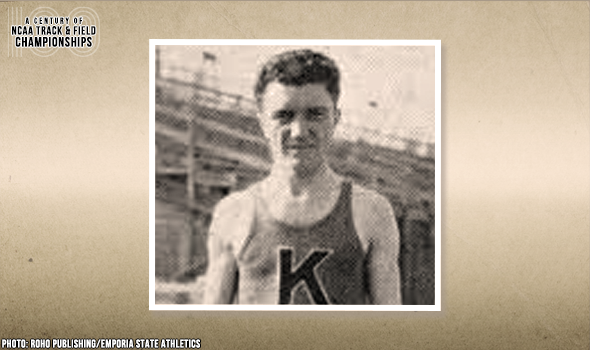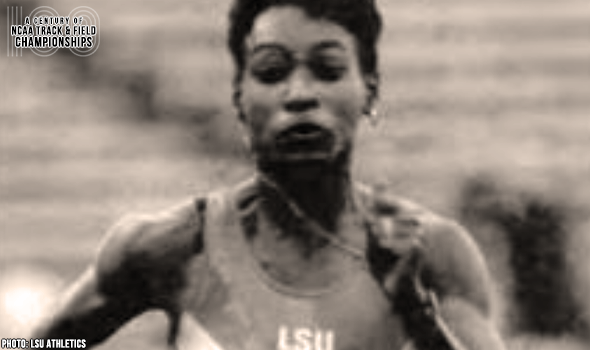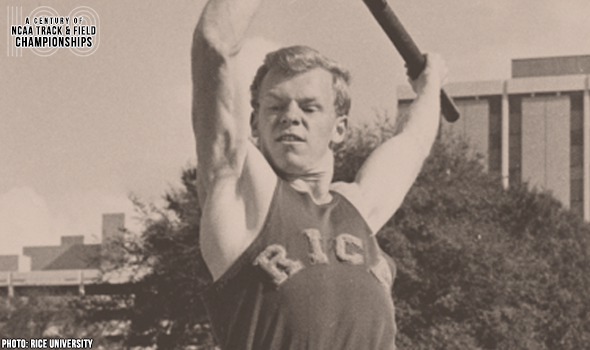
The Tie Goes To The Buckeye
Ties – and sometimes breaking them – were common for Dave Albritton of Ohio State.
But there was no breaking any of the ties in Albritton’s three-straight NCAA high jump victories, and his first in 1936 was historic as he and Buckeye teammate Mel Walker became the first Black athletes to win the event.
That duo was part of an amazing Ohio State team in 1936: They contributed two of the record seven NCAA titles the Buckeyes won that year, joined by Jesse Owens with four (100, 200, 220 hurdles and long jump), along with Charlie Beetham in the 800 meters. No program has matched that number of champions in one NCAA meet.
However, the 1936 NCAA Championships was bittersweet for the Buckeyes, whose 73 points made them the highest-scoring runner-up team in meet history (6-place scoring system). The winning squad was powerful Southern California with 103⅓ points. The bittersweet part was that just a week earlier, Ohio State tied the Trojans in a dual meet when only wins counted, 7½-7½ – the fraction coming in the high jump, where Albritton tied USC’s Delos Thurber.
Albritton’s level of tying made a major leap a month later. A week after finishing third at the AAU Championships (on a tiebreaker), Albritton clinched a spot on the Olympic team in a brand-new stadium at Randalls Island, New York, by – you guessed it – tying Cornelius Johnson of Compton Junior College – who had won the AAU meet – as both cleared a world-record 6-9¾ (2.08m). That tie was not broken.
At the Berlin Olympics, Johnson led a 1-2-3 U.S. sweep, with Albritton earning the silver medal over Thurber’s bronze on a jump-off. Johnson and Albritton thus became the first Black athletes to medal in the Olympic high jump.
In the 1937 NCAA Championships, another Buckeye was favored – but this time it was Walker after sweeping the indoor and outdoor Big Ten titles over Albritton (and setting a world indoor best of 6-9¾ as well). Albritton came through, though, tying Colorado’s Gil Cruter for the win – Thurber was third on a tiebreaker as all three cleared 6-6¼ (1.99m). Walker, a senior, finished fourth but later in the summer raised the world record to 6-10¼ (2.09m).
Albritton and Cruter returned in 1938 as the meet record – 6-7¼ (2.01m) from 1926, then the oldest on the books – was battered like never before or since. In all, six men equaled the old standard as two – Albritton and Cruter – broke it with 6-8¾ (2.05m) clearances and tied yet again as neither succeeded at attempts at a possible WR of 6-10⅜ (2.09m).
Post-collegiate success followed for Albritton, as he won five AAU national titles – the last in 1950 at age 37. Ten years after that, Albritton was elected to the Ohio House of Representatives, serving six terms and becoming the first Black person to chair a House committee in 1969.
The NCAA and collegiate track & field will mark a momentous milestone in the spring of 2021 -- the 100th anniversary of the NCAA Championships and with that, the NCAA Track & Field Championships. In June 1921, the University of Chicago hosted the first track & field championships in NCAA history.
This point can’t be emphasized enough: Not only was the event the first for NCAA track & field, but the first championships for any sport under the sponsorship of the NCAA.
To celebrate, over each of the next 365 days, the U.S. Track & Field and Cross Country Coaches Association (USTFCCCA) will celebrate moments, student-athletes, and coaches that have made a century’s worth of championships special. From humble beginnings to important historical milestones to the modern-day, collegiate track & field has evolved with the American society.
The 2021 edition of the NCAA Division I Outdoor Track & Field Championships begin with preliminary round action on May 27-29 in Jacksonville, Fla., and College Station, Texas. The championships final site and culmination of the celebration is slated for June 9-12, 2021 at the newly rebuilt Hayward Field in Eugene, Ore.

Clemson’s Ross Kept Getting Faster In 1995
Duane Ross PR’d twice in the 110H at the 1995 NCAA DI Outdoor T&F Championships. When Ross won in 13.32, he became the No. 3 performer in collegiate history.

Illinois’ Kerr Went Back-To-Back At NCAAs
George Kerr won back-to-back 800/880 titles at the NCAA Outdoor T&F Championships in 1959 & 1960. Kerr set a meet record of 1:46.4 in the 800 meters in 1960.

UCLA’s Baucham Bounded To TJ CR In 2005
Candice Baucham won the triple jump at the 2005 NCAA DI Outdoor T&F Championships with a collegiate record of 14.07m (46-2). Baucham took the event by more than one foot.

San Romani Went From Unknown To Legend
Archie San Romani won back-to-back 1500/mile crowns at the NCAA Outdoor T&F Championships in 1935 & 1936.

Auburn’s Glance Made Them Look Twice
Harvey Glance completed the 100-200 double as a freshman at the 1976 NCAA DI Outdoor T&F Championships. He set a meet record of 10.16 in the 100.

Nova’s Rhines Did NCAA 5K Three-Peat
Jen Rhines was the first female athlete in the history of the NCAA DI Outdoor T&F Championships to win three consecutive 5K titles.

Georgia’s Erm Cruised To 2019 Decathlon Title
Johannes Erm won the decathlon at the 2019 NCAA DI Outdoor T&F Championships by 342 points with his 8352 total. That was also the fifth-best score in meet history.

McMillen Adapted, Set 1500 MR In 1952
Bob McMillen set a meet record in the 1500 meters of 3:50.7 at the 1952 NCAA Outdoor Track & Field Championships.

LSU’s Duhaney Destroyed NCAA 200 Field In 1992
Dahlia Duhaney owns the largest margin of victory in meet history in the 200 with her 0.44-second winner at the 1992 NCAA DI Outdoor T&F Championships.

Rice’s Roberts Cooked Up Pole Vault Greatness
Dave Roberts was the second man to win three consecutive pole vault titles at the NCAA DI Outdoor T&F Championships, doing so from 1971 to 1973.

